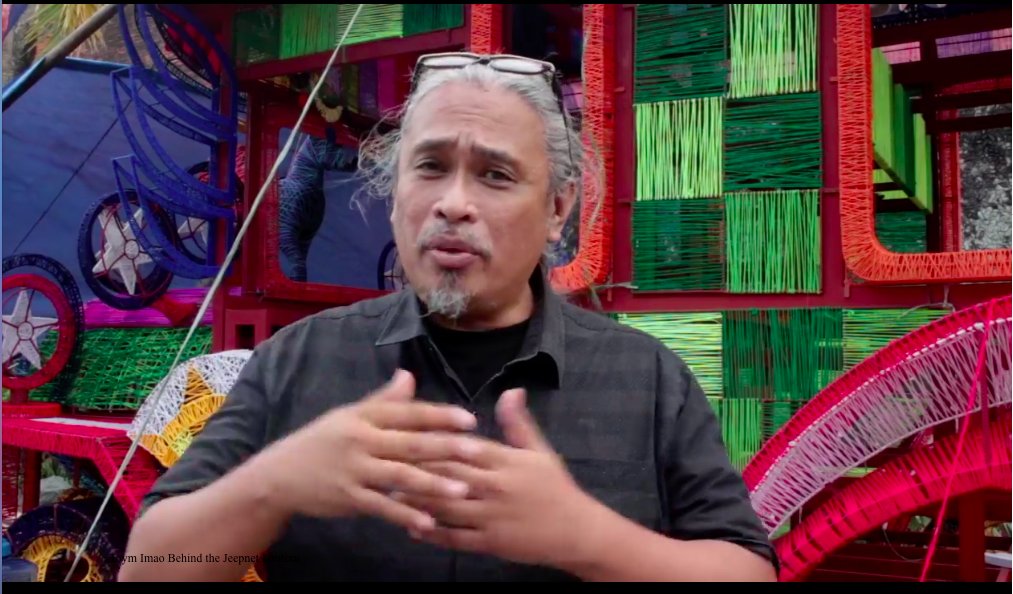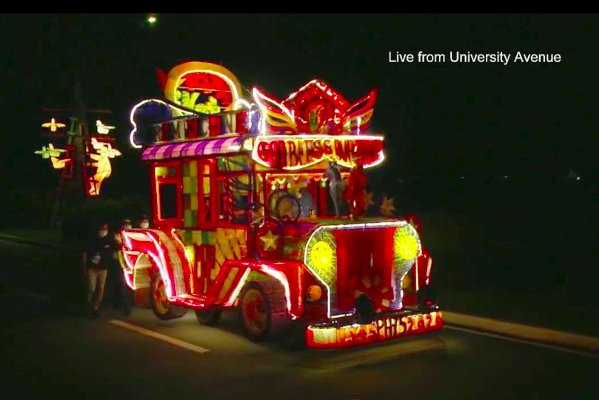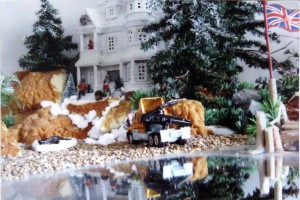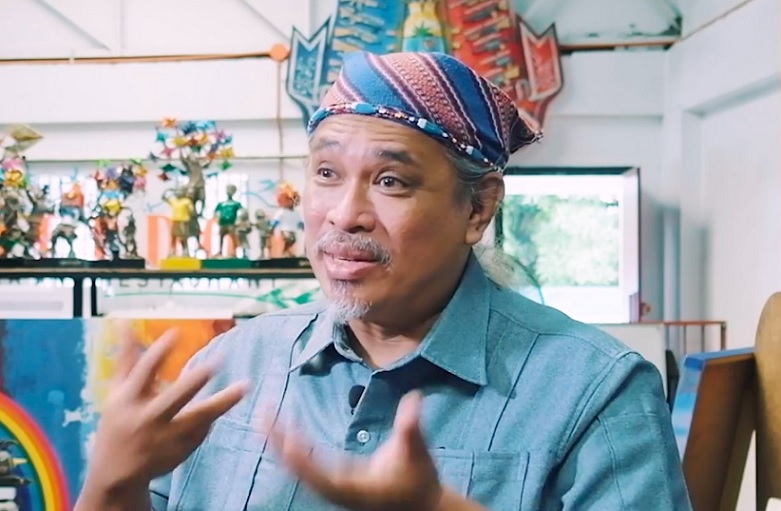Christmas 2020 may be the year that the Covid-19 Grinch almost succeeded in stealing Christmas from the hearts of Filipinos.
But UP Diliman’s virtual Pag-iilaw or annual lighting ceremony to signal the start of the Christmas season in the 493-hectare campus took place last November 27, with the theme Abot-Kamay, Abot-Tanaw, Sulong sa Bago at Mas Mainam na Bukas. Streamed live, you can still watch it in the university’s Facebook page.
The decision to hold a virtual Pag-iilaw was not taken lightly amidst serious discussions of its appropriateness; it was pushed through, albeit much scaled down.
The Pag-iilaw represents what we need in these uncertain times —”a little bit of light to spread goodness and cheer, to at least momentarily lift the spirit of the community,” says Toym.
For visitors, entrance to UP Diliman is only from 5am to 9am and 4pm to 8pm, with groups limited to 10 people. For quarantine guidelines, see the UP Diliman website.
Parola 2020
A multimedia artist, sculptor, painter, Toym Imao has designed the Parola along the University Avenue, as the central icon in the Pag-iilaw ceremony. He has been the art installation master of UP Diliman’s Christmas lanterns since 2015.

Toym Imao behind the art Jeepney
A multi-element installation, the Parola is composed of a giant flame lantern at Quezon Hall, the administrative center of the university; an illuminated jeepney; and smaller installations in various areas in UP Diliman that are connected with the Covid-19 fight.
The installations are made of bamboo ladders, human-shaped lanterns, bird lanterns of red and green plastic sheets, and red bamboo poles. They crisscross the ladders to bind the installation together, representing the challenges that must be overcome amidst the pandemic restrictions.
One figure is climbing the bamboo ladder with an arm extended, a helping act of abot-kamay; another figure has a hand above its eyes, surveying the environment with keen awareness, an abot-tanaw.
Imao also notes that the university is a parola, a lighthouse, “a point of reference to navigate around hazards toward safer grounds.”
The main portals of the campus have also been lighted, symbolic of the University’s role as a fearless critic of society and the nation, despite red tagging and threats of defunding.
The Jeepney Lantern
The opening night also saw an illuminated jeepney wrapped in colorful yarns and Christmas lanterns. The familiar phrase “God Bless Our Trip” adorns its top. On its hood, a standing horse made of yarn, the traditional mascot of jeepneys. On its bumper, it reads 1945-2020, a shout out to the 75th year of the jeepney’s existence.
It is Imao’s tribute to the country’s jeepney drivers, including the ikot drivers inside the campus, who have lost their livelihood during the pandemic.
Lantern Art Installations
UP Diliman’s installation lanterns and themes have always reflected issues of the day for the university and the nation.
In 2015, the first installation was Dingas: Adhikaing Diliman, Adhikaing Bayan, in celebration of the state university’s 107 years of existence. Dingas means light, leading to a flame-inspired design, and 107 torches were around the Oblation Plaza, fronting Quezon Hall.
In 2018 , it was Kamalayag, a giant lantern in the form of a traditional boat, kumpit. Kamalayag stands for malaya (free), kamalayan (awareness), alay (offering/sacrifice), and layag (sail). Its theme was Paglaot, Pagdaong (Sailing Out to the Sea, Landing) to commemorate the 70th anniversary of the transfer of the Oblation from UP Manila to UP Diliman.
What’s in a name?
Abdulmari Toym Jr (b. 1968) is the eldest of four sons of Abdulmari Asia Imao (National Artist of the Philippines in Sculpture, 2006) and Grace de Leon of Santo Tomas, Pampanga and named after his father’s award of Ten Outstanding Young Men of the Philippines in 1968.
With an architecture degree from the University of the Philippines and a master of fine arts degree in sculpture from the Rinehart School of Sculpture, Maryland Institute College of Art, Baltimore, Maryland, Imao Jr. has been working as a fine arts lecturer in UP Diliman.
Some of his outstanding works in sculpture include the Tandang Sora National Shrine in Quezon City, the Andres Bonifacio National Shrine in Maragondon, Cavite, Cordillera Freedom Movement in Baguio City, and the Dr. Jose P. Rizal statue in Carson City, California.
“Let There Be Light”
Abot Kamay, Abot Tanaw 2020 encapsulates the University’s hope that Filipinos across the archipelago may overcome challenges hurled its way in a time of Covid-19.
The lanterns certainly bring a smile to weary faces, amidst the hope of having a steady job, three meals a day, or even a quiet life without being killed for nothing. Simple dreams, really.









